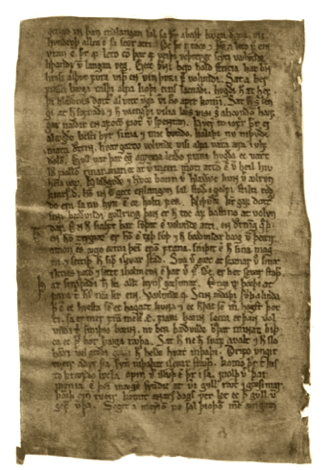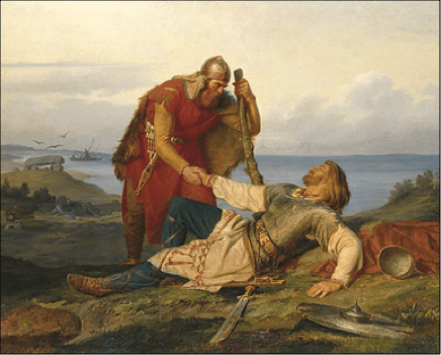Viking Studies: Literature and Lore

The importance of place and cultural memory in relation to our surviving texts plays a key role in our studies of Viking-related literature. The nearby island of Samsø,for example, figures prominently in medieval Icelandic saga literature, Saxo’s Latin history of Denmark and later ballad traditions. It is on the island of Samsø that the god, Óðinn, is said to have learned a special form of magic. And on Samsø, according to a variety of medieval texts, a famous battle takes place between a group of berserks and the warrior Örvar-Oddr and his companion Hjálmarr. Famously, it is to the burial mound of one of these interred berserks, Angantýr, that the fallen berserk’s kinswoman, Hervör, goes.
There she awakens her dead father and engages him in an eerie conversation in order to retrieve his famous sword, Týrfing, in the poem, “The Waking of Angantýr.”
Participants will leave this class, not only with a keen understanding of an important medieval literature, but also with the critical cross-disciplinary tools necessary to contextualize and interpret it. Moreover, we will examine the ongoing reinterpretation of this era in later periods (e.g., 19th-century Scandinavia), and especially the ways in which history and perceptions of “the vikings” develop into national narratives.
The world of the vikings and heroic literature
How were the immense cultural, political and demographic changes of the Viking Age reflected and remembered in later centuries? What belief systems and narrative traditions did Scandinavians of the Viking Age inherit, how did they preserve and develop these materials, and how were such accounts passed on to, and shaped by, subsequent generations? These and other issues concerned with the narrative legacy of the Viking Age—the myths and sagas known from Iceland in later centuries in particular—are the subject matter of this course. In addition to examining the surviving spiritual documents relating to the Vikings and their descendants, we will also pay special attention to such important theoretical issues as Memory Studies, Performance and Orality.
Through careful examination of skaldic poetry, the sagas, the so-called Eddas, and archaeological evidence, we will consider reconstructions of Viking Age religious life, and explore in detail the mythic adventures of such Norse gods and goddesses as Óðinn, Þórr, and Freyja. In addition to examining Norse religion and mythology, we investigate the heroic legacy of the Viking Age, especially as it is reflected in the medieval Icelandic sagas. These surprisingly modern, novel-like medieval prose works present their heroes as warriors, kings, poets, outlaws, and adventurers, often using the historical Viking Age or an imagined “Heroic Age” as their dramatic backdrops.
Based as we will be in Southern Scandinavia, we take numerous excursions to important sites and monuments related to our readings and discussions (e.g., Jelling, Fyrkat, Lindholm Høje, Lejre, Samsø), examining in detail various rune stones, churches, central places, cult sites, and other features that undergird our understanding of the historical events of the Viking Age and the literature that develops around them.
